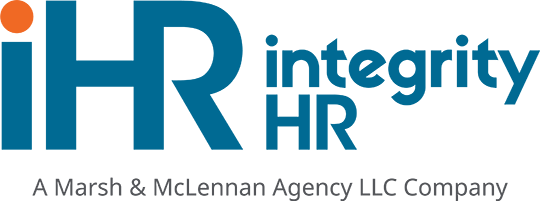Exempt or Non-Exempt? That is the Question.
Okay okay. Sorry to go all Shakespeare on you, but sometimes we have to spice up compensation topics to get your attention. Back to matters more important.
Compensation is not just a word we throw around to make us look smart. It’s serious business.
What do you think of when we say, “Compensation?” Most people think it is just a fancy word for what’s on your paycheck. But it’s so much more—including whether jobs are classified as exempt or non-exempt
If you are incorrectly classifying a non-exempt employee as exempt, it could result in a lawsuit. Lawsuits mean money and lots of it.
I bet we got your attention now.
In recent years, there has been a great deal of litigation related to misclassification of positions. Many employers were fined and were required to pay back pay to employees that were incorrectly categorized. Not good.
Knowing the criteria to qualify an employee as exempt or non-exempt could save you and your company the time and money of a lengthy lawsuit.
So that’s what we want to help you with today.
The Fair Labor Standards Act (FLSA) has issued a nifty series of questions you can ask to find out if the employee is exempt or non-exempt.
Here’s what it all comes down to: The difference between an exempt and non-exempt employee is how they are compensated. An exempt employee is paid to get the job done regardless of how many hours they work. They are not required to take breaks. Non-exempt employees are entitled to overtime pay at a rate of 1.5 times their hourly rate, for time worked over 40 hours in a work week. They are also entitled to take meal and rest breaks.
Seems simple, right?
If only! There is a list of standards that make this issue of exempt or non-exempt much more complex than it appears on the surface. Many employers are unknowingly violating many of the rules set by the FLSA.
Common Mistakes Employers Making In Classifying Employees as Exempt or Non-exempt:
- Using the position title to classify the employee.
- Docking a exempt employee’s pay for time missed at work.
- Not providing proper lunch breaks. Requiring an employee to answer phones or do any other task during their break, means you have not provided a true break.
- Failing to treat mandatory meetings or company outings as hours worked.
Are you guilty of these mistakes? If you got a sheepish grin on your face as you read the above or if you had to quickly minimize your browser so your employees wouldn’t read over your shoulder, then you need to keep reading. (Even if you didn’t have the above reactions, you should probably keep reading, too. It’ll be worth it).
Now, there are three main tests you can use to see if your employees should be classified as exempt or non-exempt.
Here are the three tests:
- Salary Level Test
- Salary Basis Test
- Duties Test
Let’s break them down.
The Salary Test
The Salary Test asks how much the employee is paid. If any employee makes less than $23,000 per year or $455 a week they are non-exempt. If an employee makes more than that, they may be exempt but only if they meet the second or third tests.
The Salary Basis Test
The Salary Basis Test asks if an employee is paid on a salary basis or an hourly or fee basis. If the employee regularly receives a prearranged amount on each payment period, they are paid on a salary basis. The predetermined amount cannot be reduced in any week that the employee does any work.
The Duties Test
Don’t freak out, but the Duties Test is the most complicated of the three tests. This test states that an employee’s duties meet the parameters of the executive, professional, administrative, computer and outside sales exemptions.
- Executive Exemption– Eligibility for executive exemption relies on if the employee regularly supervises two or more other employees whose authority includes some genuine input into the job status of other employees. This includes hiring, firing, promotions, and assignments. Many employers fall into the trap of thinking mere supervision automatically qualifies an employee for exemption, but they must also have direct authority over the job status of other employees.
- Administrative Exemption-The administrative exemption applies to employees at a high level of the company whose main job is to keep the business running. Employees who make what the business sells are not administrative employees. Examples of this type of employee are HR and labor relations, payroll and finance, records maintenance, accounting and tax, legal, etc.
- Professional Exemption– Advanced degrees are the most common measure for the professional exemption test. However, they are not required if the employee has acquired the similar level of advanced education through other means and perform the same kind of work as someone with an advanced degree. The employee is question must be a “learned professional”, such as a doctor, lawyer, dentist, teacher, etc. Creative professionals can fall under this exemption as well. Their work must involve invention, imagination, or talent and contribute a unique interpretation or analysis. The professional exemption is the rarest of these exemptions.
- Computer Employee Exemption– Positions under this exemption include: computer systems analyst, computer programmer, software engineer or other similarly skilled worker in the computer field.
- Outside Sales Exemption– To qualify for the outside sales employee exemption, the employee’s primary duty must be making sales (as defined in the FLSA), or obtaining orders or contracts for services or for the use of facilities for which a consideration will be paid by the client or customer; and the employee must be customarily and regularly engaged away from the employer’s place or places of business.
See that’s not so bad is it? To read more about these exemptions, check out this resource on the Department of Labor website.
Here’s the reality: If the person responsible for classifying employees or writing position descriptions does not fully understand the criteria above, your company could be making some costly mistakes.
In a time where managers and owners are spending more time than ever on the basic functions of running the business, these tests can seem very complicated and difficult to apply.
Many times when a company is not compliant on these issues, they are completely unaware until they are on the receiving end of a lawsuit. To avoid the financial penalties, bad publicity, and enormous headache that come with these mistakes, every employer should do a thorough review of their exemption policies.
If you broke out into a full sweat while reading this blog, you may need some help. No worries, Integrity HR is here for you! Integrity HR offers a variety of compensation consulting services to help you maximize your team’s performance and make sure you avoid those nasty lawsuits.
FREE RESOURCE:
Are you wondering if your company could be a risk due to insufficient HR policies and procedures? Are concerned that your HR isn’t running as smoothly and effectively as it should be? Worry no more!
You can take our online HR Compliance Review in less than 10 minutes and instantly receive your HR Risk score and HR Effectiveness rating.
Go ahead, click below and get one step closer to reducing your risk, increasing productivity, and gaining a peace of mind.












